Practice and Revision
At the beginning of October last year I brought to close an extensive research project into BSP-based level design as my map project Nameless Revenge reached a more or less fully playable state. I learned (and wrote) a lot during that year-long process about Quake, level design tools, architecture, and myself. It was a delight and a relief to reach the point where I could play the whole level from beginning to end, but it was also obvious to me that it shouldn't have taken so long to reach that point.
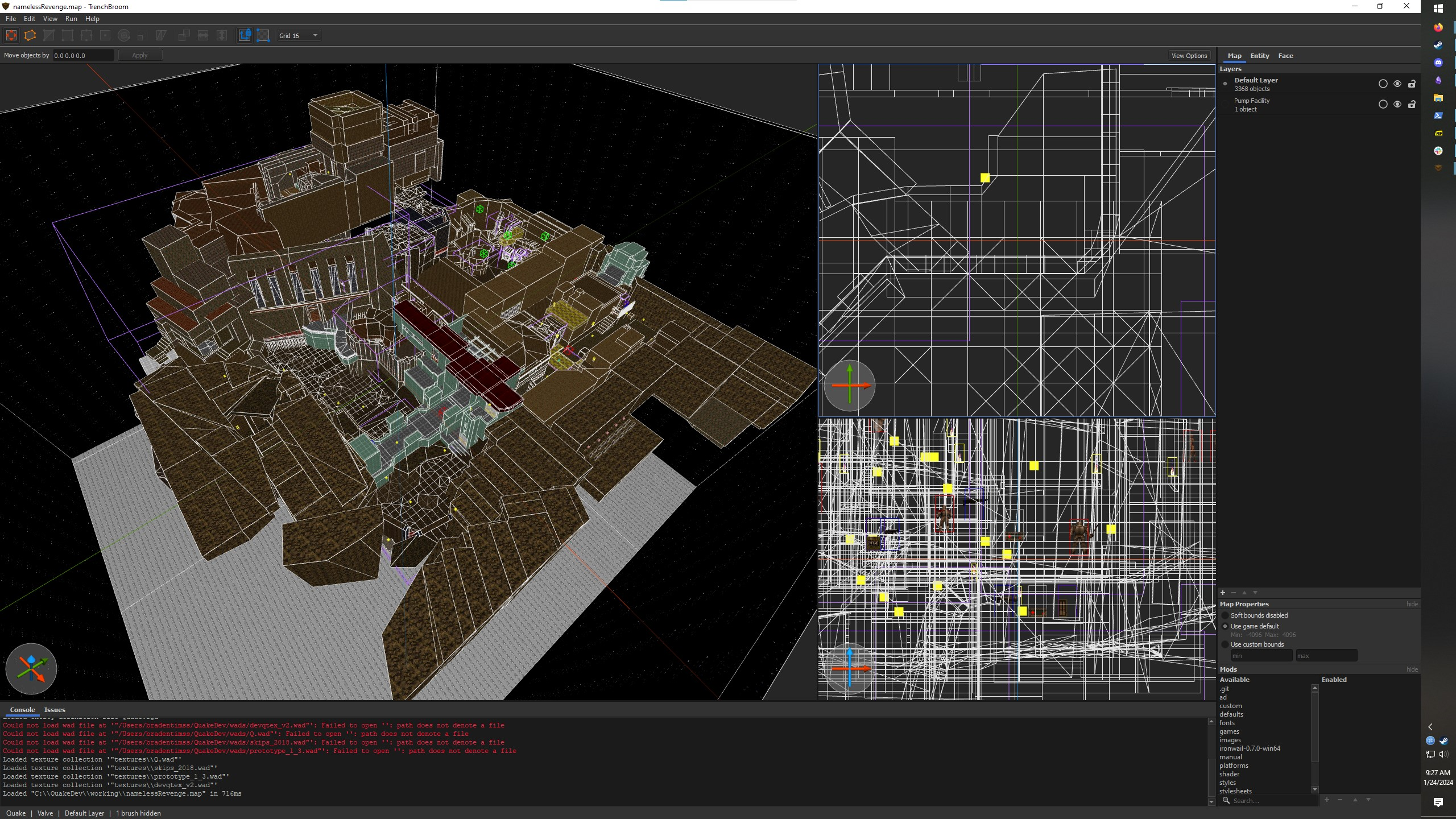
At this point I was thinking that the map had reached its alpha state, and I shifted into what in writing may be called the editing phase where my main goal was to reshape parts of my map into spaces conducive to Quake gameplay. The greatest learning experiences during that month of editing work did not emerge from the creation of new architectural features or clever enemy encounters, however, but through the slow discovery that much of the work I had set down during the past year was basically impossible to iterate on. The geometry of many parts of Nameless Revenge was out of whack and difficult to predict when working with, though I wouldn't understand exactly why that was until I found myself in a similar situation during my next map project. The player could fall through the map or get stuck on polygons as they wandered and portions of rooms I had intricately built up could not be adjusted or else the compiler would crash. It was another frustration in a development process that had grown only more frustrating as time went on.
I wanted Nameless Revenge to be fun and interesting to play, not just merely playable. It's been a point of insecurity that I was taking this long to make what is basically my first map, and that for the longest portion of its development there were very little encounters. Though I could say with certainty that I was familiar with operating Trenchbroom, how much could be said about my knowledge or talent as a level designer? Nameless Revenge could have been something I used to prove myself...
But after a short period of time had passed and I felt certain that what I actually wanted to do next was start an entirely new map project. And that seemed to confirm something positive about the relationship I have to my work, which is: for me, at least for now, the point is not the product but the work. It would be okay if Nameless Revenge would forever be just merely playable, so long as something else would prove to be interesting and fun to play.
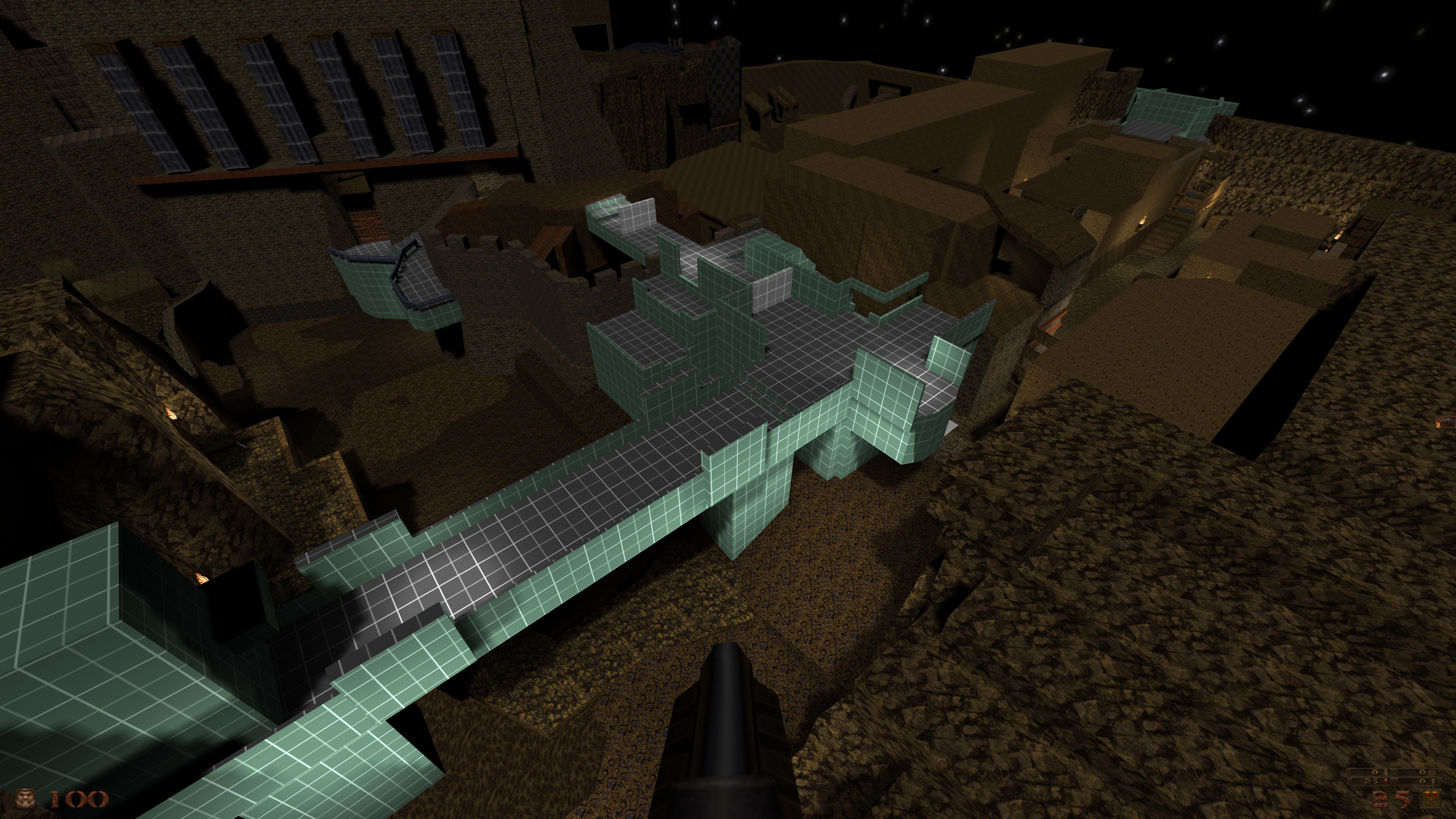
So I abandoned Nameless Revenge and started a new map project.
Completing and then publishing a map this time around would be great. After all, what am I but a newby working on his fourth or fifth unreleased first map? Well in actuality I know I'm a little more than a list of publications and a stack of to-do lists. Because what I really want is to come away from this project with a greater sense of what a sustainable creative practice could look like. This means that it must be able to accommodate the incremental pace that I am relegated to due to having a full-time job. It must involve as little monotony as possible. And, of course, it has to remain fun enough for me to desire working on the thing for however long it's going to take. To this end I reflected on things I did wrong or outright did not do with Nameless Revenge.
The first thing that I decided to change was to build into my process a period for pre-production. What does this mean with level design? Well, according to my research (Yang & Yoder; Lee) it differs for each level designer. Some focus more on architectural sketching while others only need a sense of experiential narrative to begin with. I found it comfortable to start somewhere between the two, so I started with sketches as a means to discover an emotion that I could use to fantasize an adventure. This was something I actually did with Nameless Revenge and many times acting as GM for a ttrpg, and it's a tool that by this point I trust quite a bit to help clarify a direction and starting point.
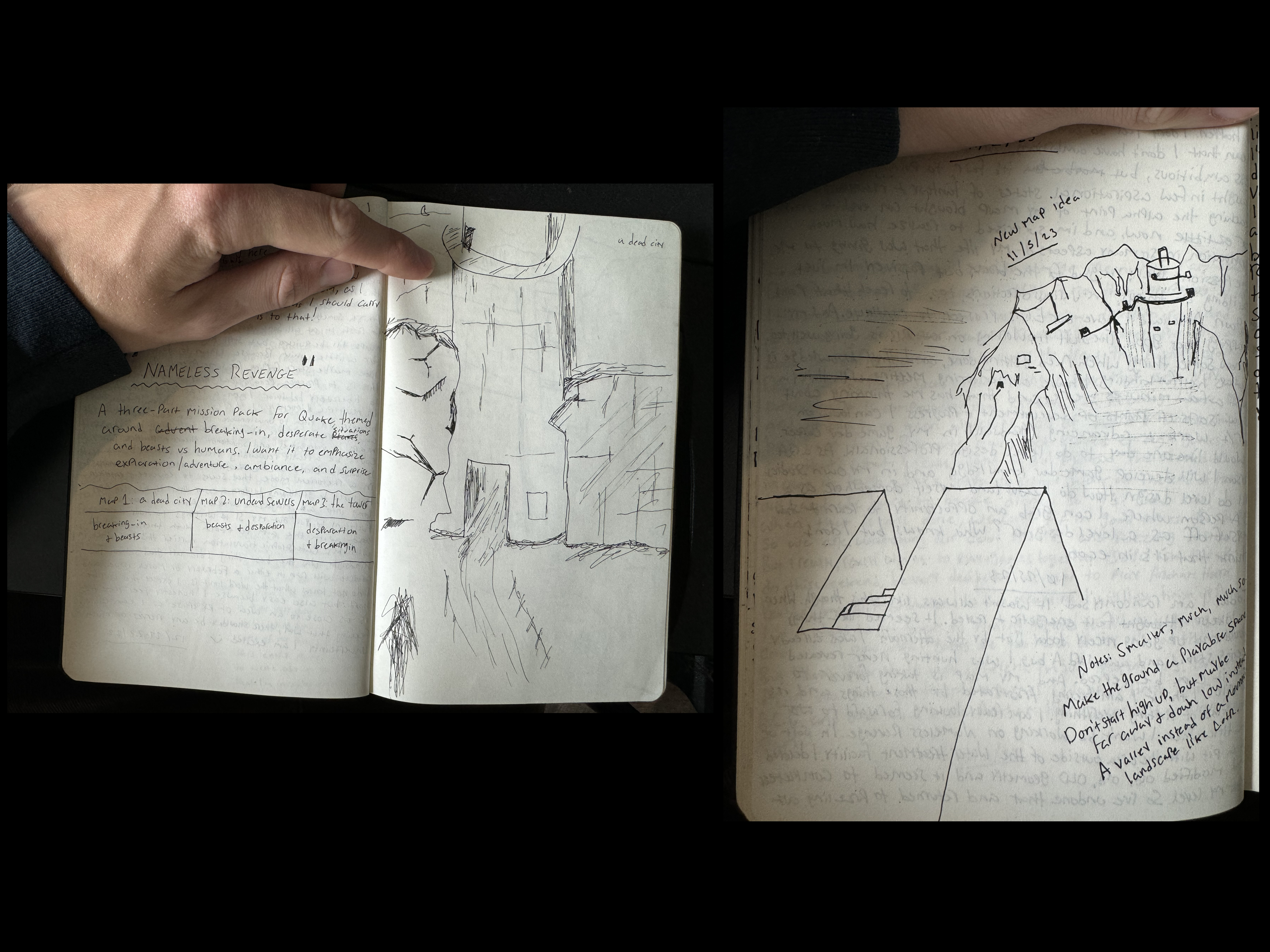
It was a couple weeks later I noticed that I was no longer exploring the emotion of my sketches but instead thinking through the logistics of drawing out the space in brushes. It was time, then, to transition away from that early-early dreamy interval and begin drawing my level layouts as a step in the direction of finally creating something stable and solid-seeming. I suspected that setting down my design early on would have made finishing Nameless Revenge much quicker. It was good to wander but always proved incredibly challenging, and destructive, when I felt satisfied by my whims and then had to stitch portions of my level together and integrate them into the adhoc design I was continuously updating. The freedom of working like that was great and is something that must be afforded throughout any creative project, but the lack of rigor it engendered was also key to many of the problems that cut development of Nameless Revenge short. Pushing myself to sketch out the entire map in a detailed but still usefully abstract level of fidelity would be the last bit of work before I reached the end of pre-production.
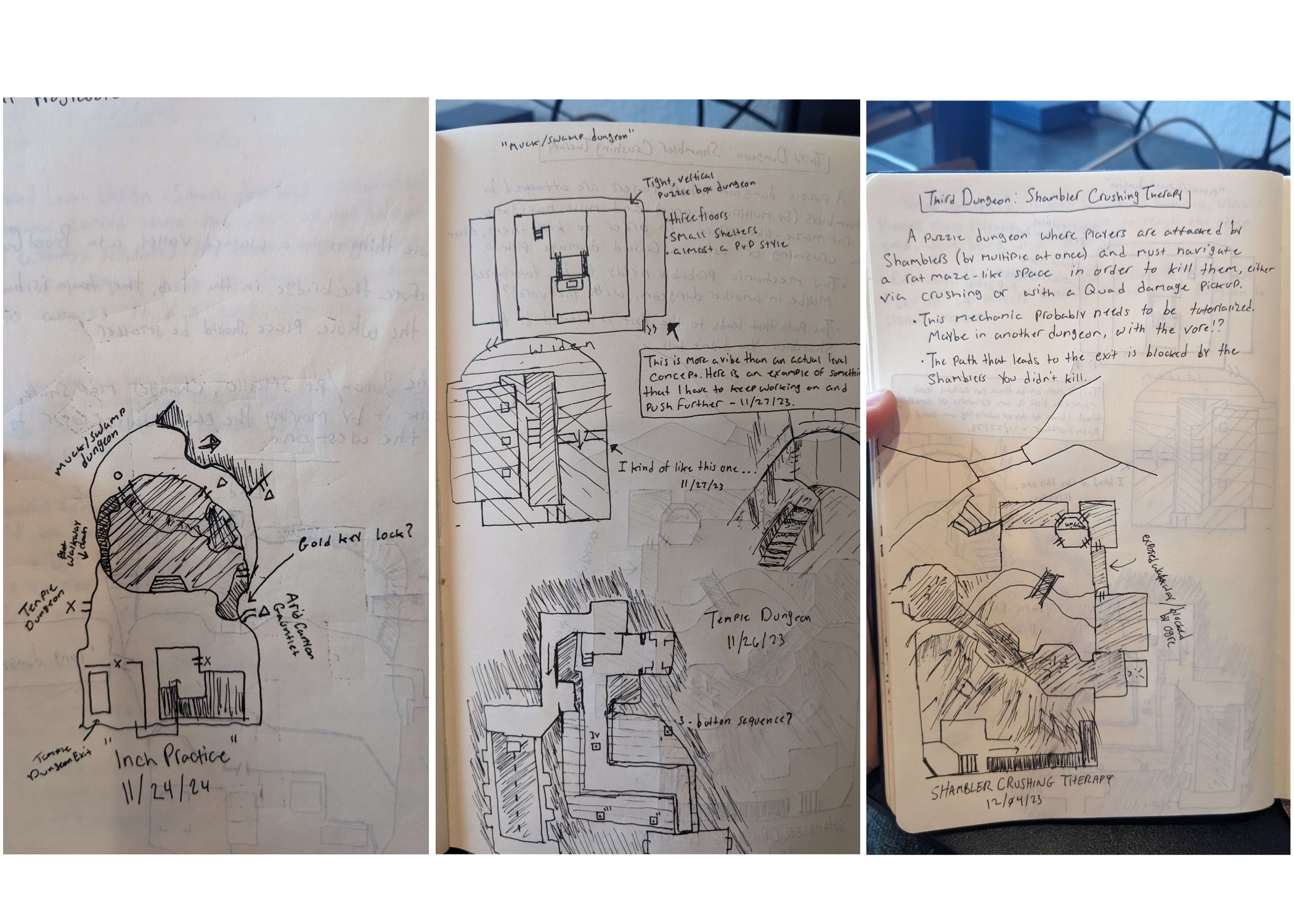
After that was completed the only thing to do was begin blocking the level. The first session was promising a refreshing break from bad habits and a grappling with new challenges as well as my known limitations. Establishing a sense of scale was the first thing to really push me. Somehow I never had to fuss over it while making Nameless Revenge, probably because I lacked the level of care I am now trying to instill with my practice. I also left that session with my mind set on tangible problems that I could mull over while away and which I could jump right back into. Terminating a day's work with a sense of what to work on next has proven very helpful in any ongoing project I've taken up. Working on Nameless Revenge only confirmed this, but through the negative. Too frequently would I start work on that map without any clear goal, merely hoping that I'd have a productive day, only to walk away having accomplished not too much at all. By correcting that habit I hope to establish as much as I reasonably can a sort of rhythm for the work that is ever ahead of me.
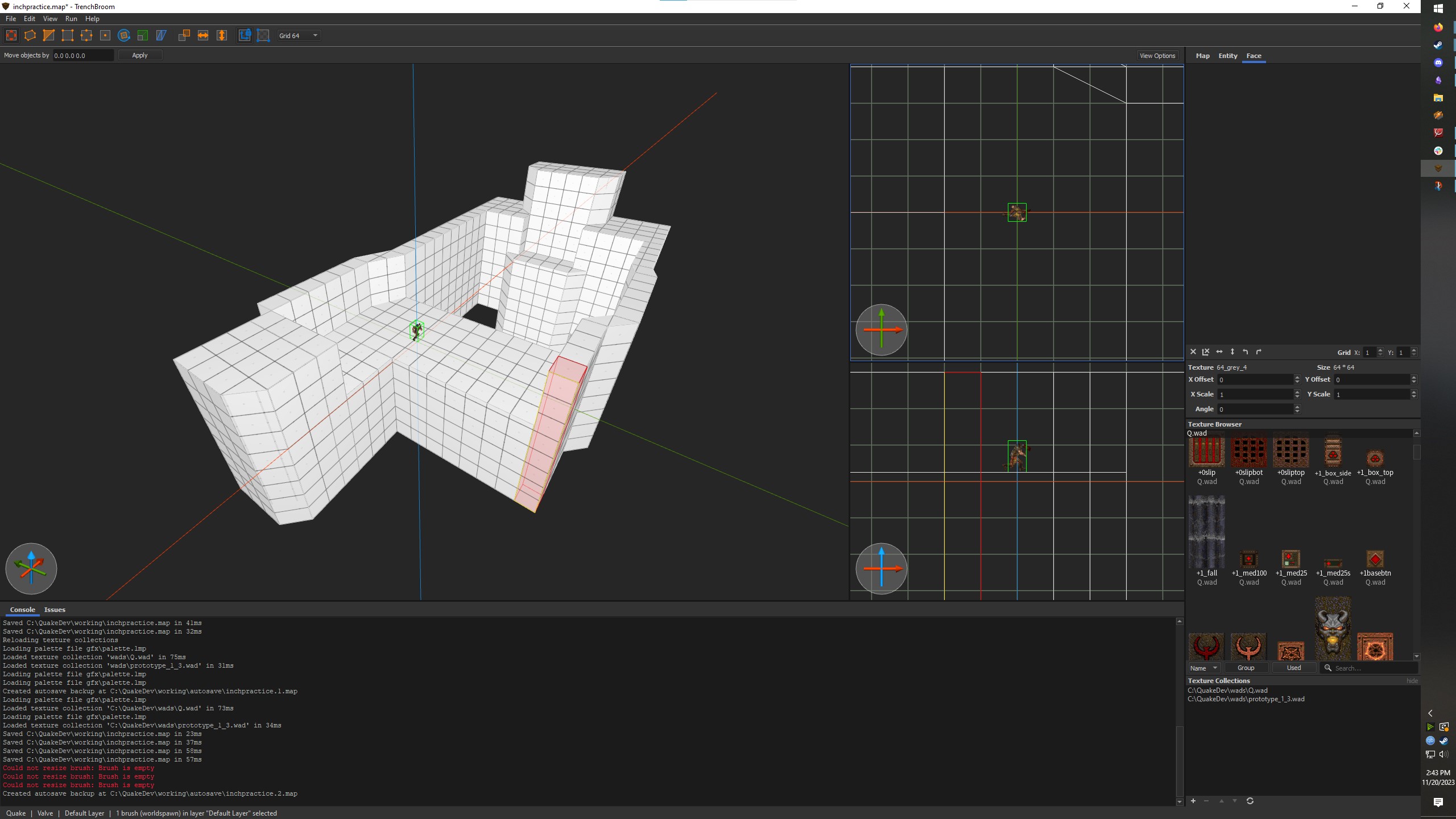
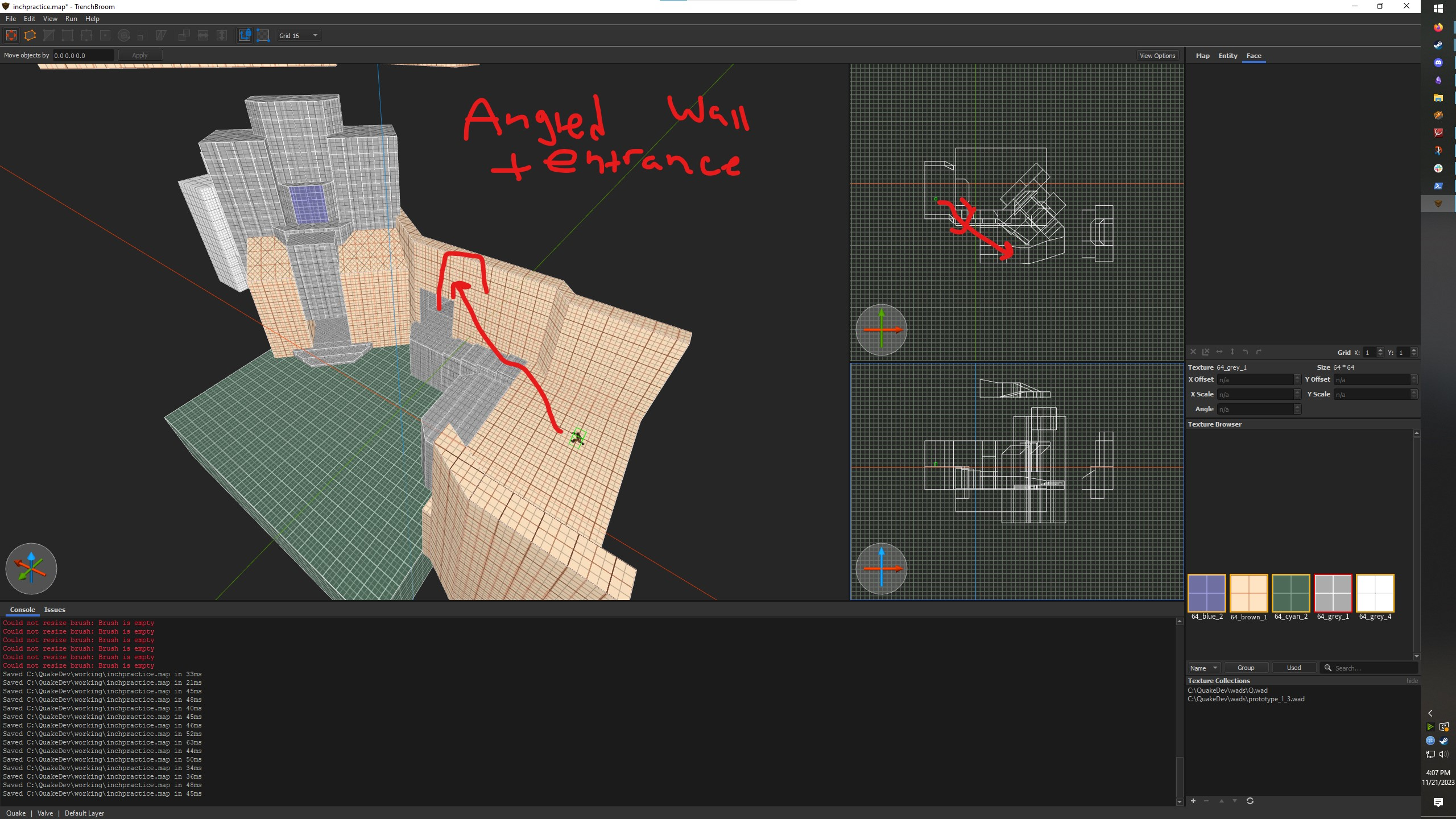
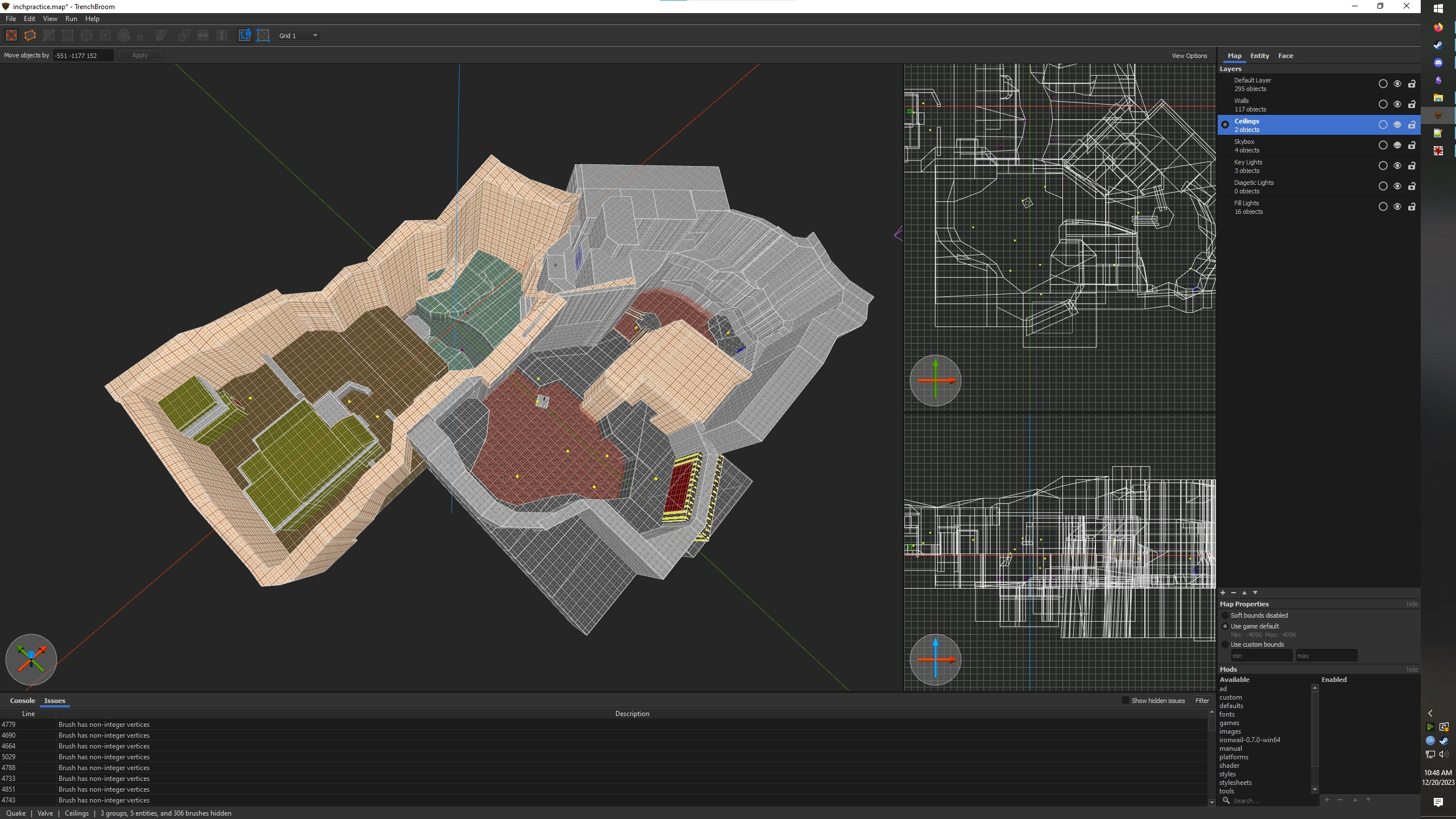
A couple of weeks into production of InchPractice I was able to confirm my suspicion that starting a new map project would afford me a quicker rate of opportunities to learn from than Nameless Revenge presented me in the lead up to its alpha. Because I had a design sketched out blocking was performed quickly, and I would have mostly completed spaces that I could texture and light, which compelled me into bouts of research and stretches of practice and productive digressions as well. Looking at the pictures I have shared in this post, you likely won't see things the way I do, but, as I write this weeks later, the markers of progression are obvious to me.
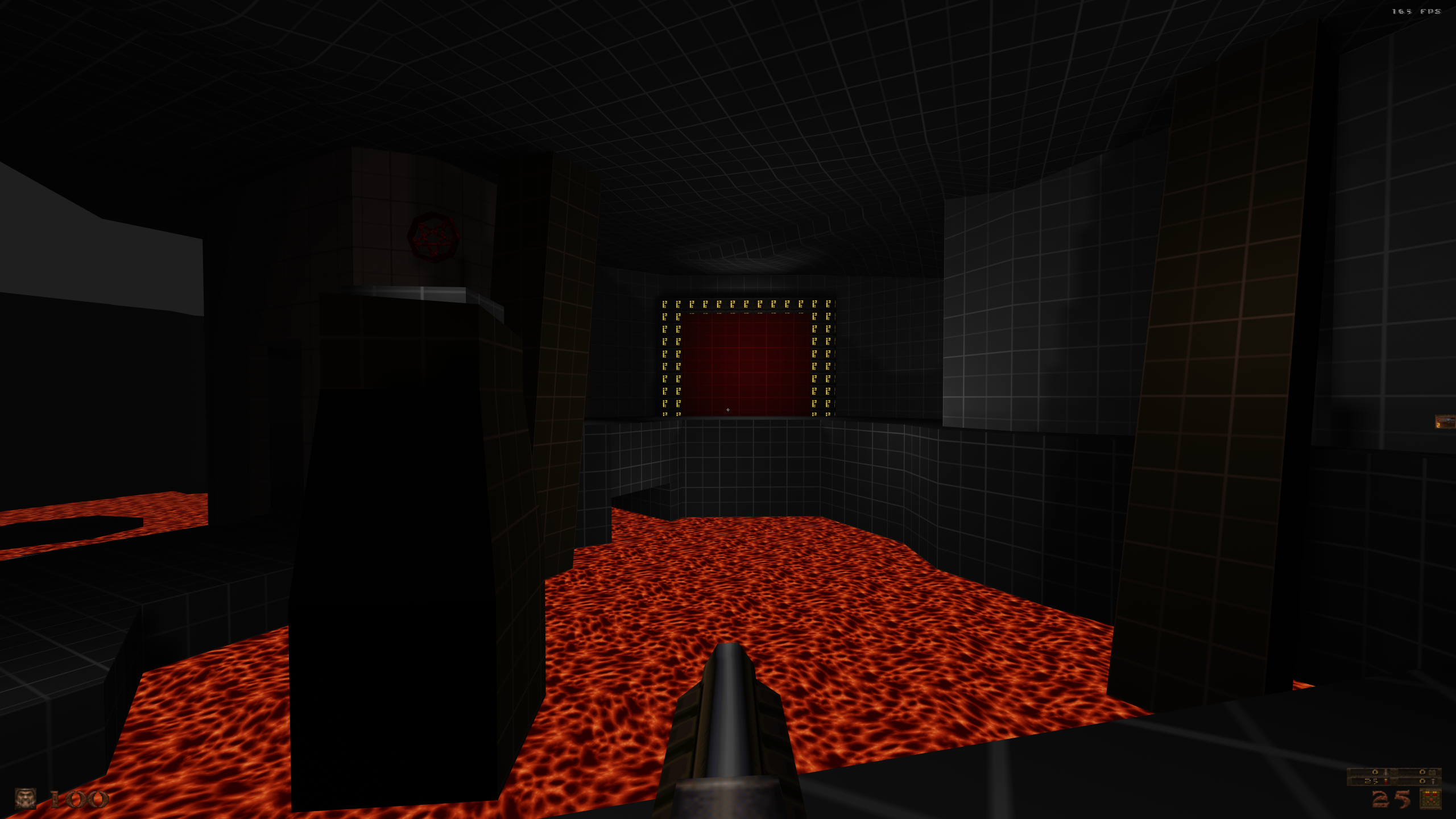
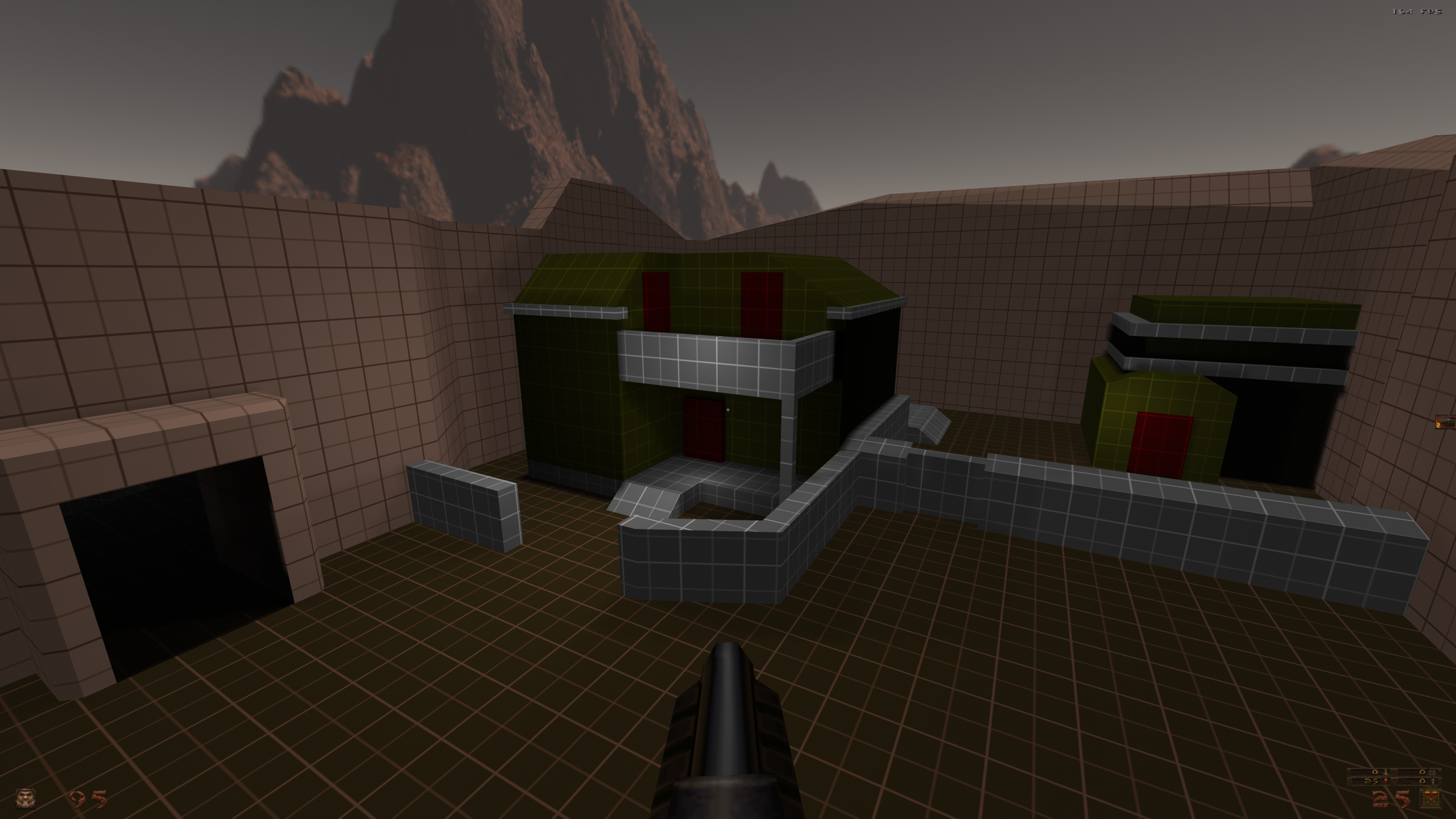
And just when my blockout was cohering into something that may one day possess the quality of a place, and scale, perspective and the dynamics of movement were finally implicating each other and I was beginning to register during my playtests the first pleasurable impressions of space, I had to learn a lot about a problematic thing called off-grid geometry.
Surprisingly, this is a topic that feels like is underdiscussed due to an assumption that it's just obvious why off-grid geometry is something to be reduced or outright avoided. For the experienced, this is obvious. But during the development of Nameless Revenge I started to notice geometry that was inexplicably no longer solid or that wouldn't render at all, it was obvious that there was a problem, and I assumed it had something to do with the quality of my work, it just was not obvious that drawing brushes or creating angles that didn't sit at integer value positions along the virtual grid were the cause of this.
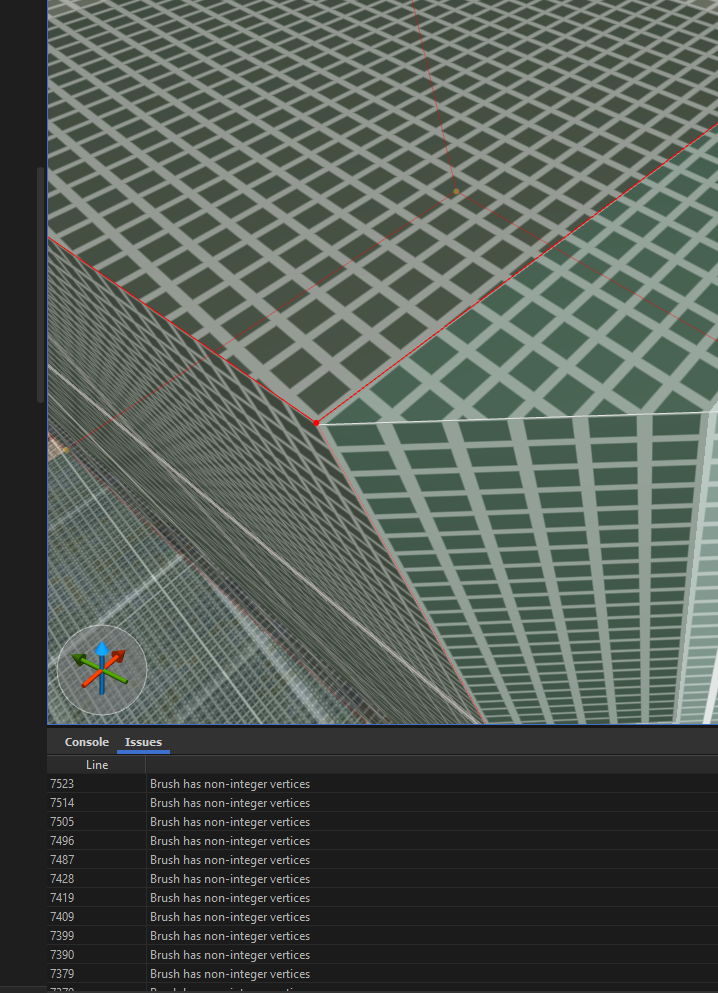
When I looked at Trenchbroom's console with the InchPractice file loaded up, I saw I had created hundreds of examples of off-grid geometry. Already, the foundations of my work were faulty and liable to end exactly as frustrating to iterate as Nameless Revenge. So early into this project and already I was saddled with loads of completely unnecessary work amounting to a total upheaval of everything I already set down.
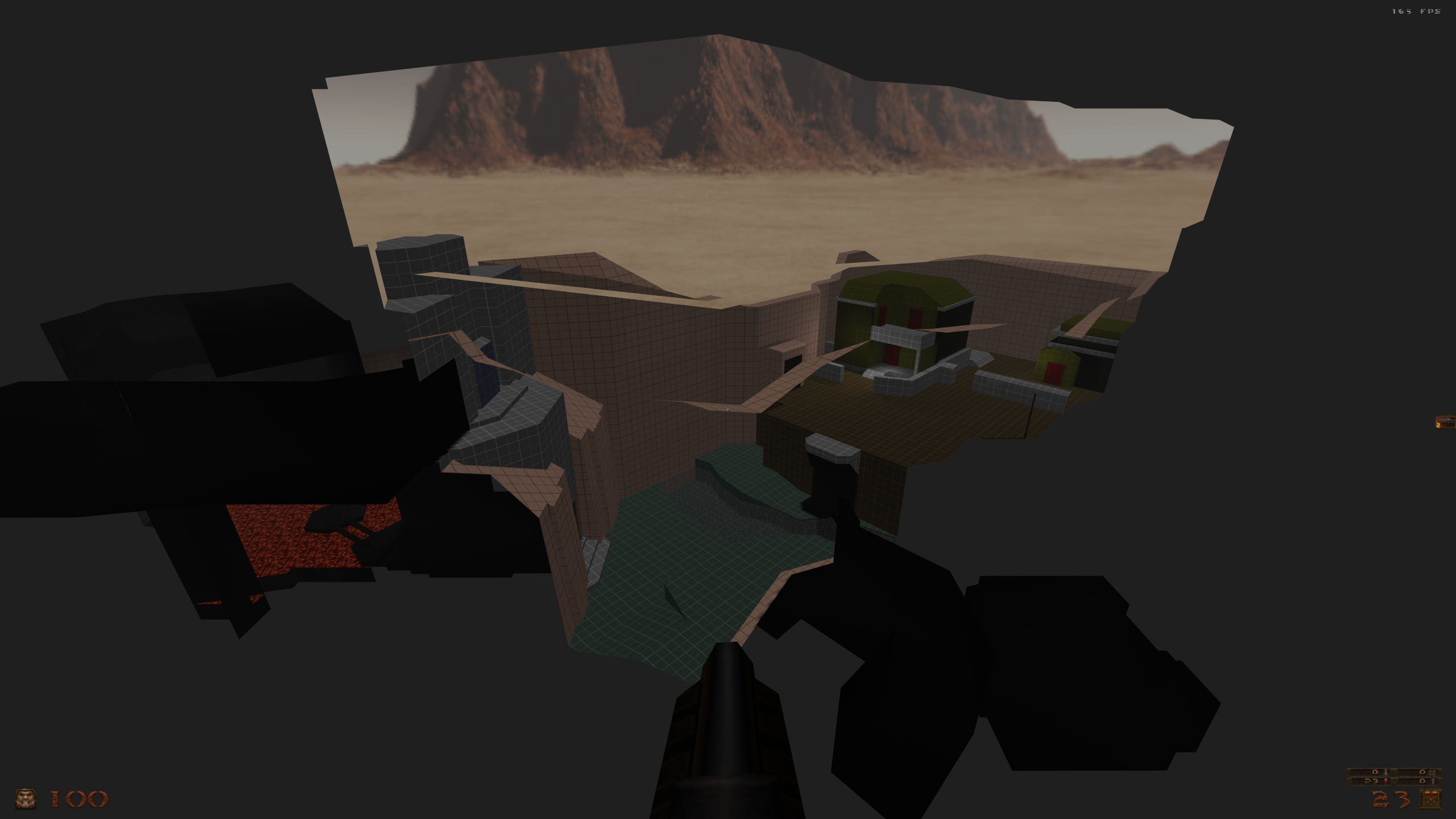
Instead allowing myself to let time pass and a valuable learning opportunity, after researching ways I could avoid creating off-grid geometry, I committed almost immediately ending this project to start a new one where I would redo all my work but quicker, better, and with more joy.
Thus I abandoned InchPractice and became a newby working on the second iteration of his fourth or fifth unreleased first map, which I called InchRevision. And things are going extremely well. All the work I've redone is better, more viable as a Quake level, and looks nicer too. It only took a week or two to catch up to where I was in InchPractice, and now I am approaching having a third of my initial design playable in-game. Though there's still lots of work ahead of me, it seems the care I am affording through this practice is paying off in just the ways I hoped.
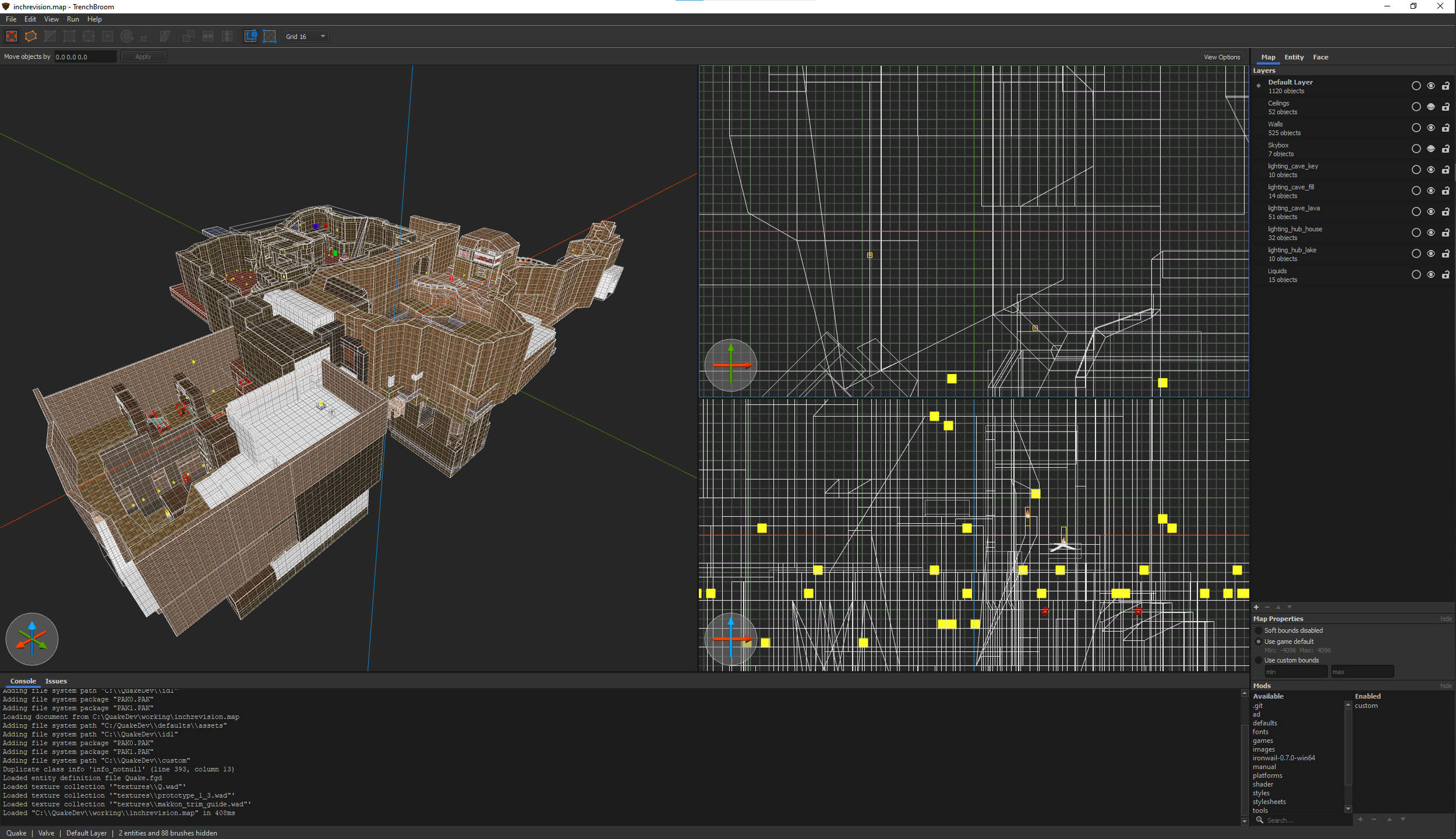
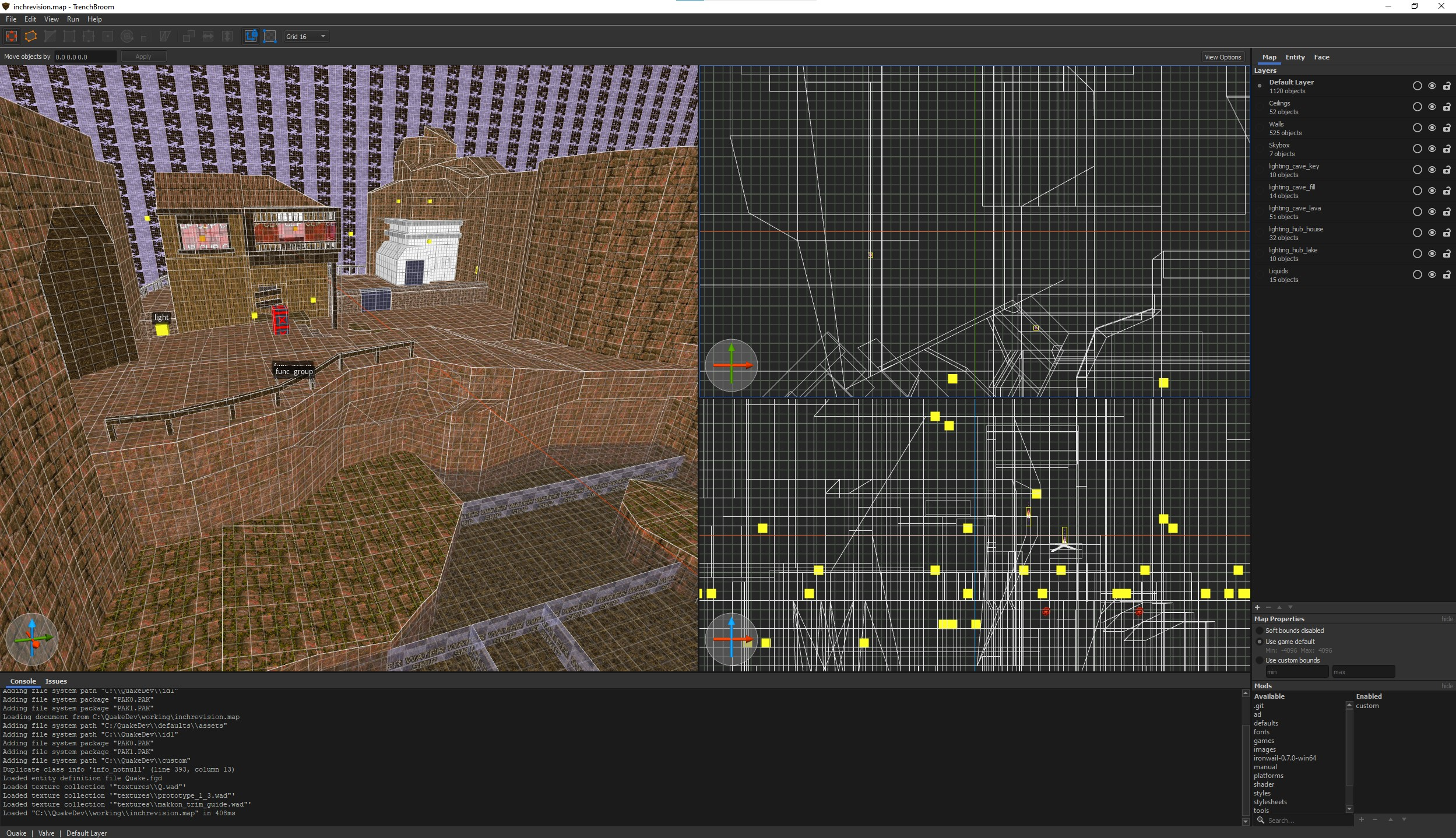
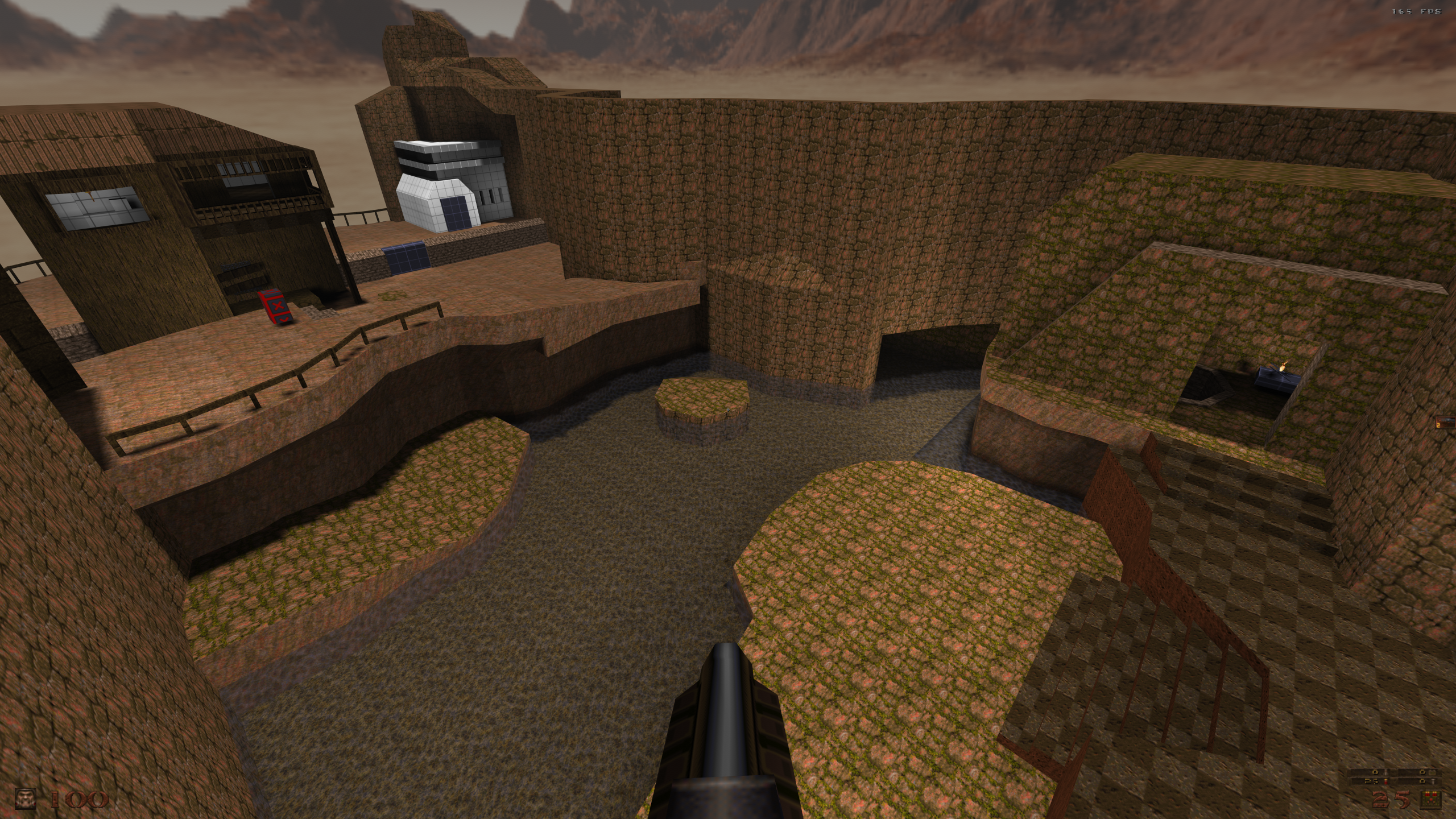
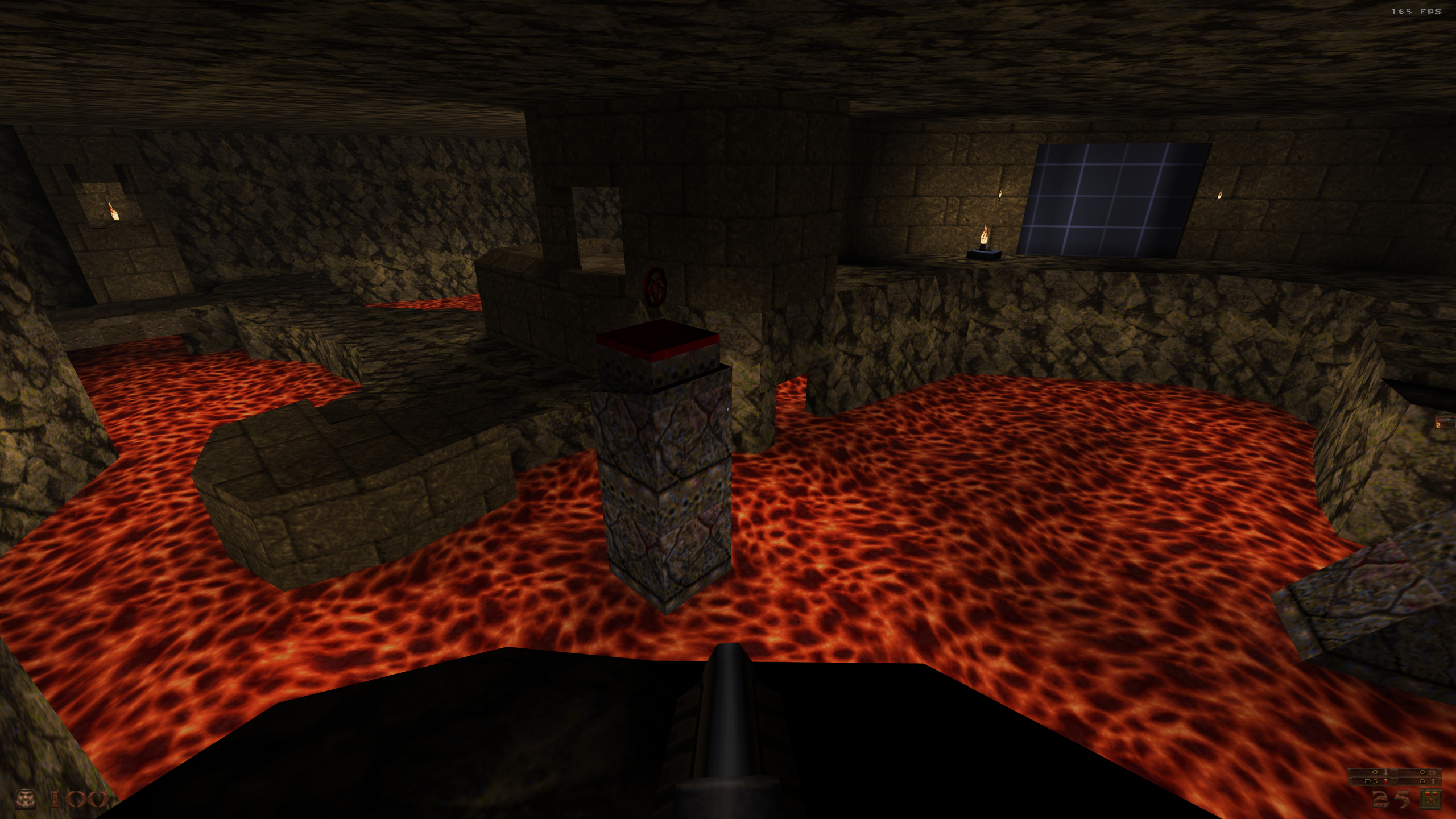
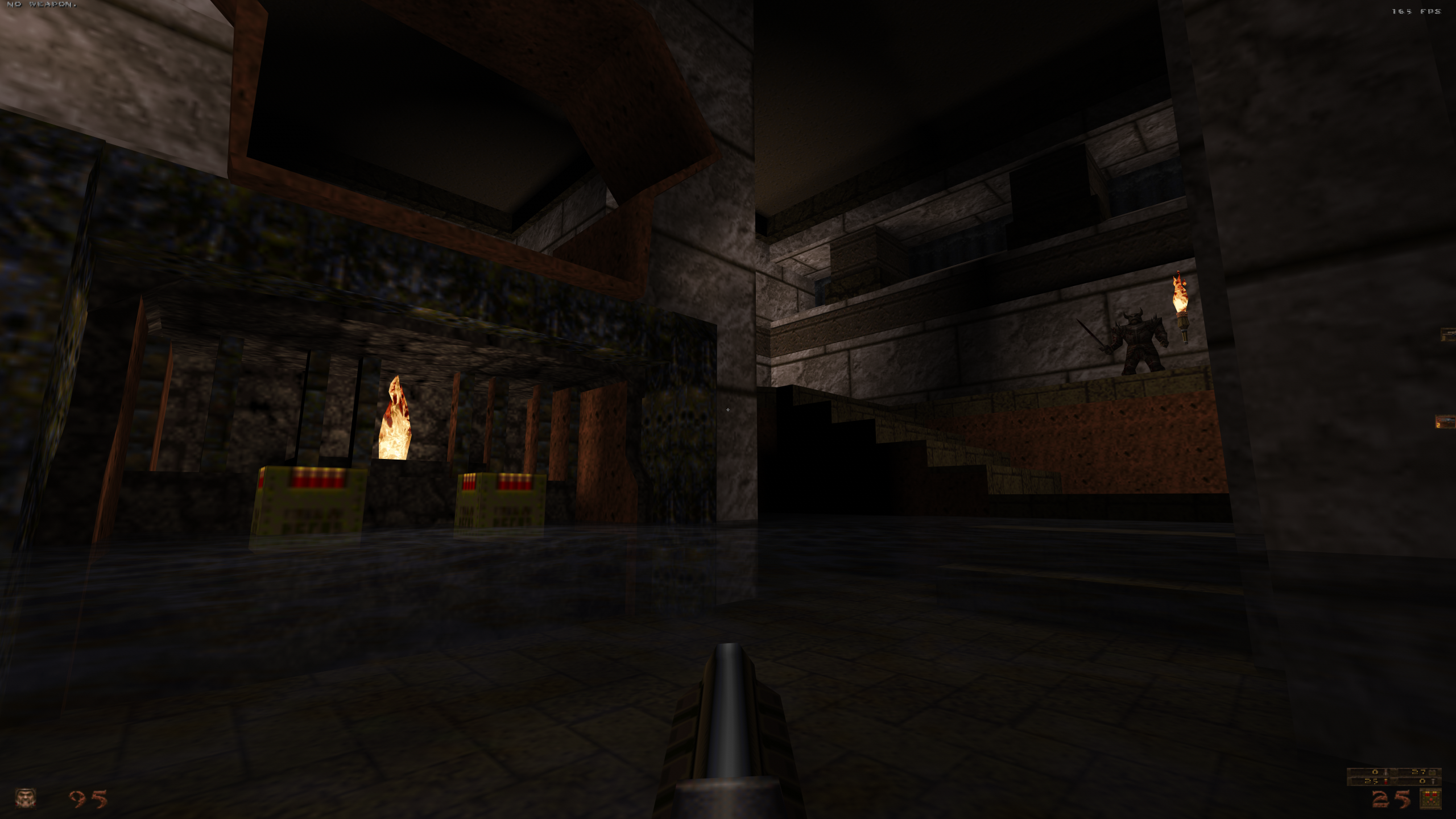
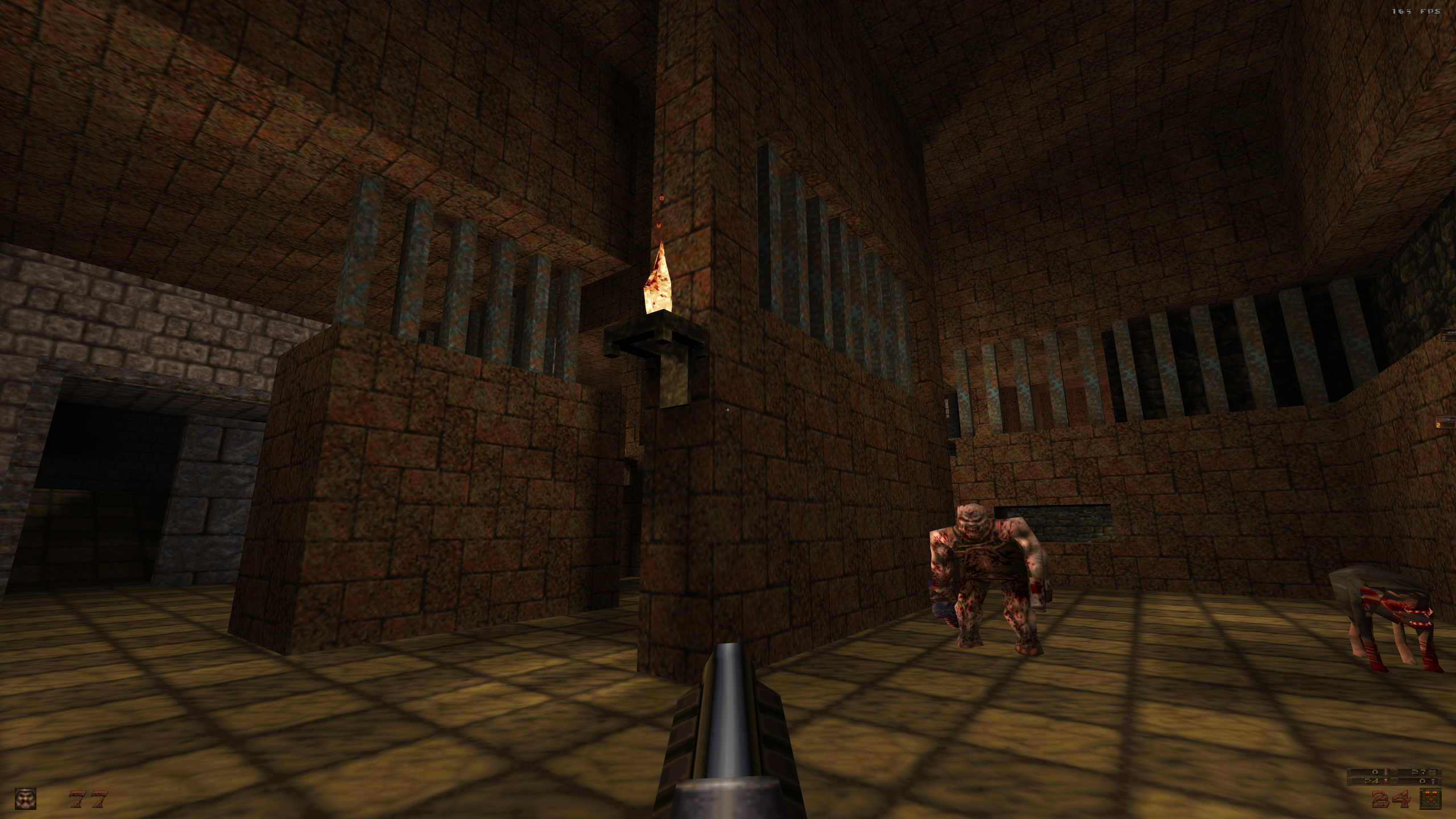
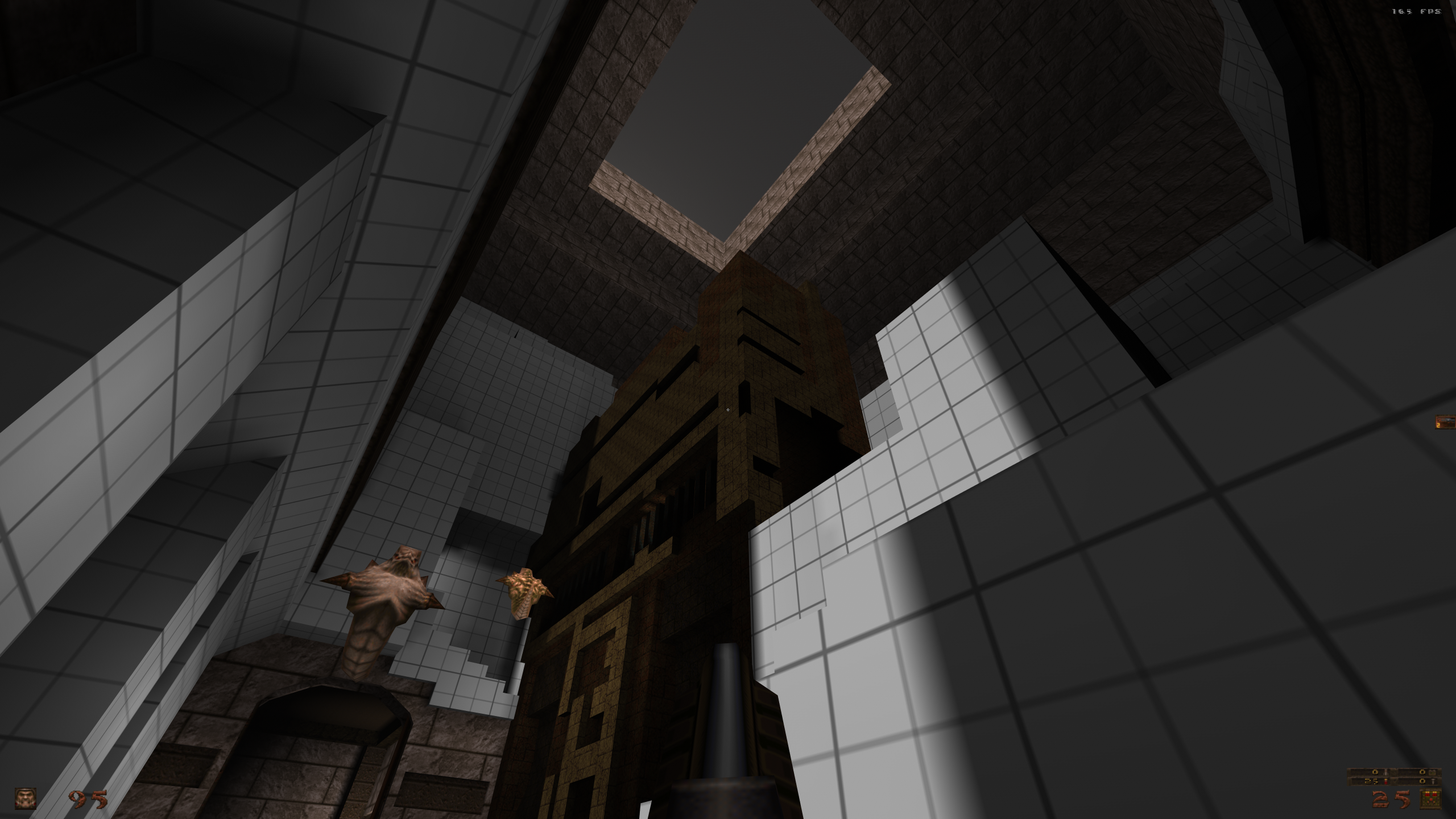
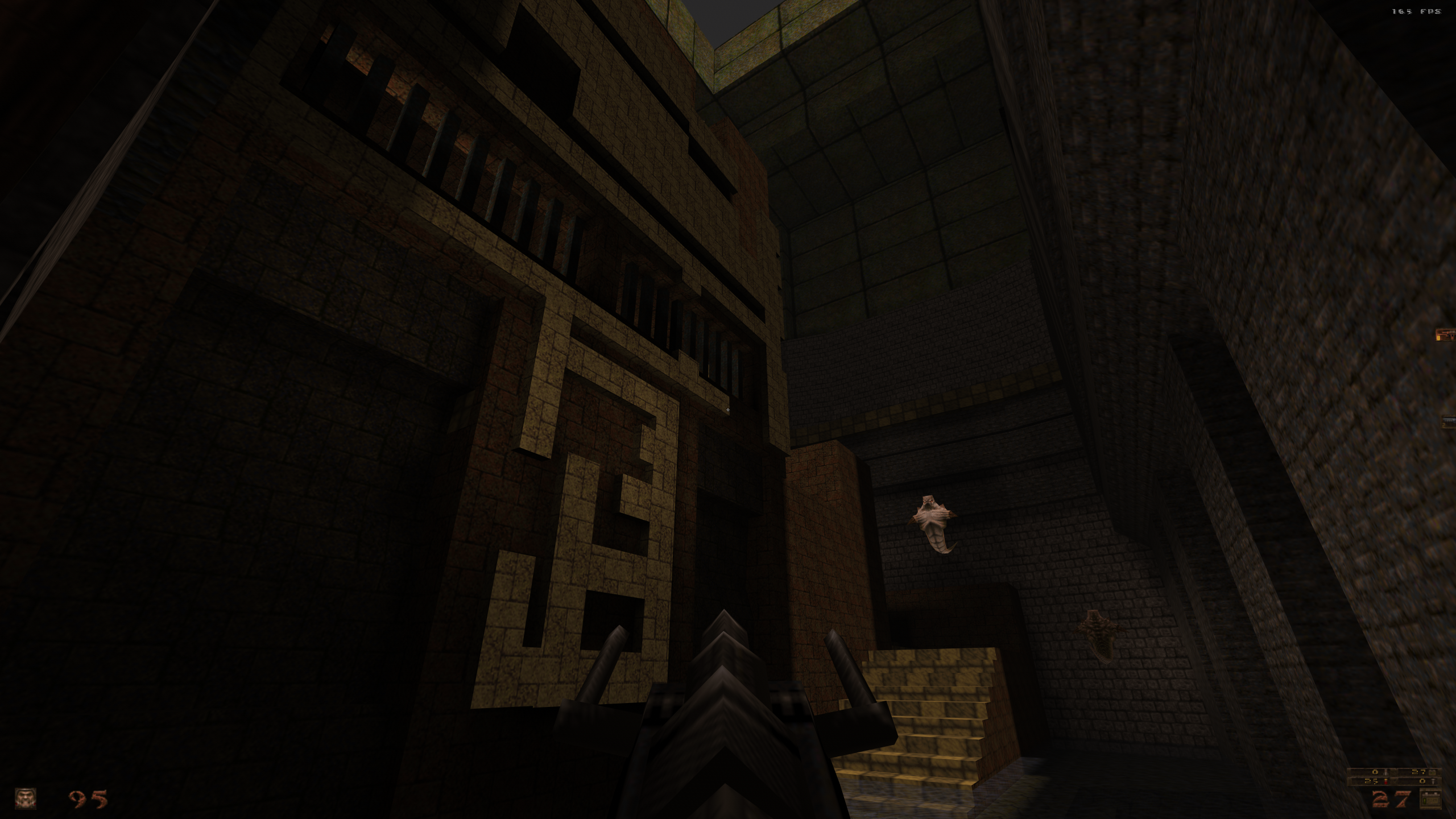
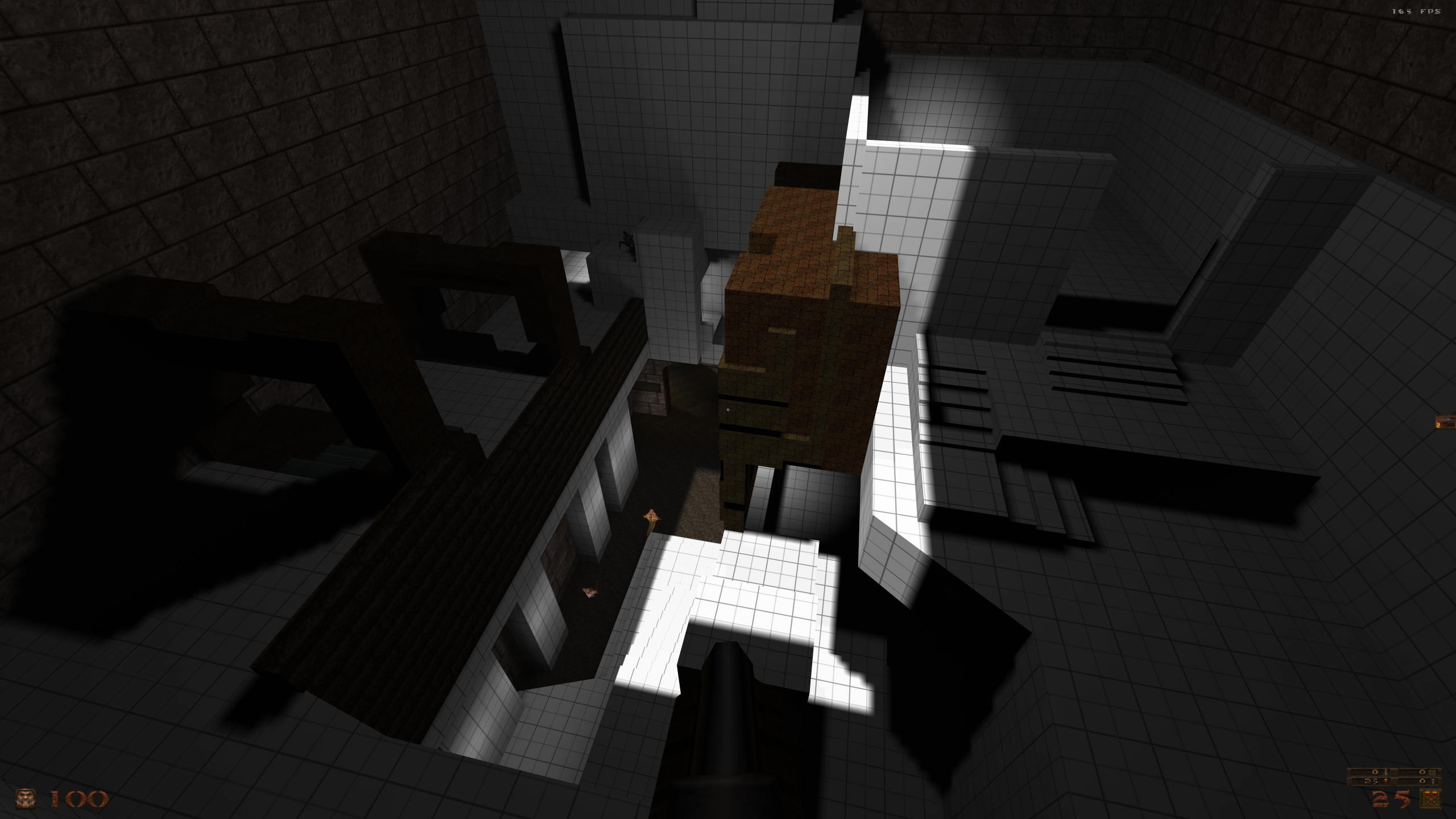
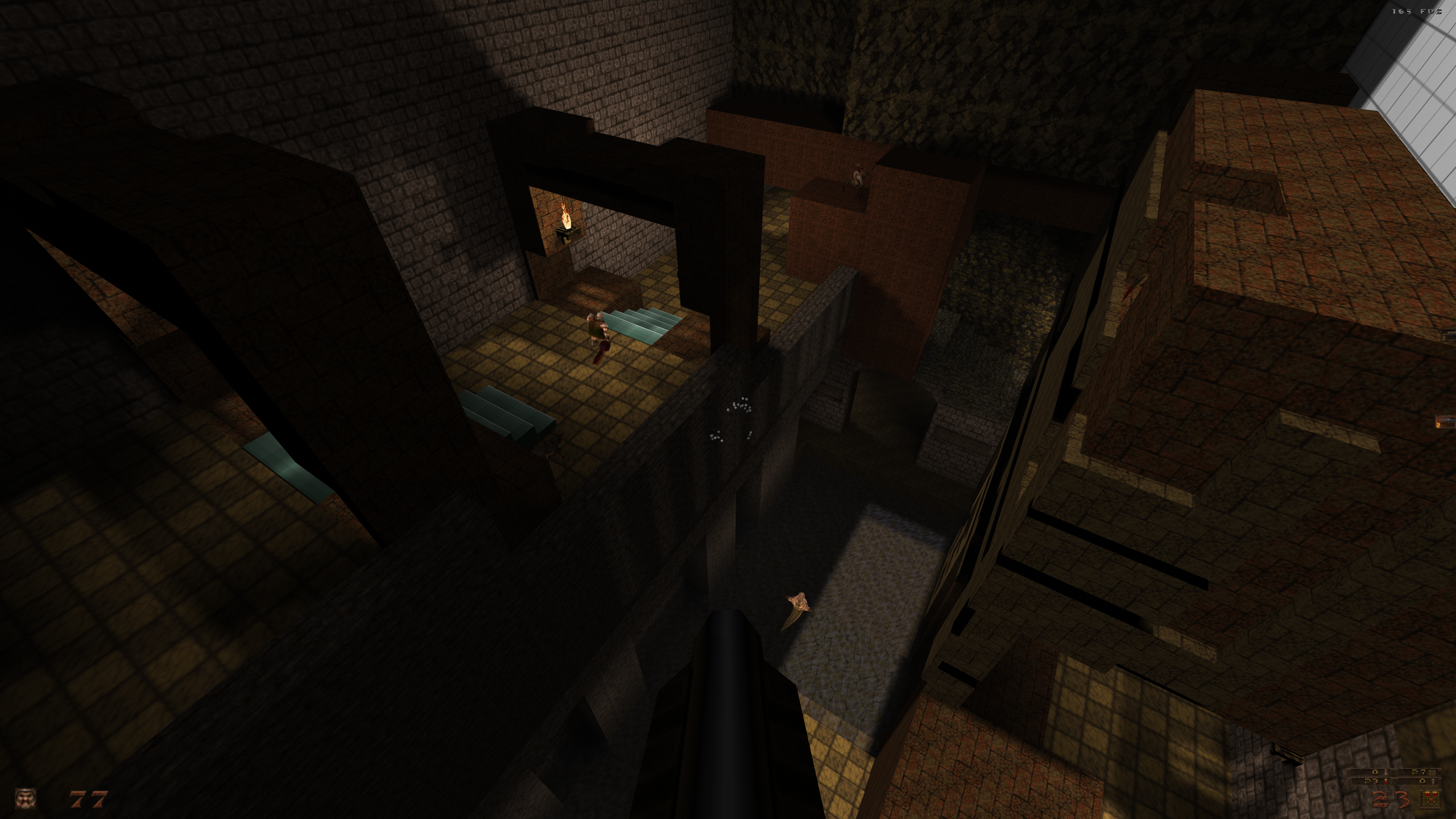
I hope to be able to share more of InchRevision in another post more focused on its design, but I felt it was important to document what my ambitions are and what I am doing with my practice. Where my practice leads me to fall short, exceed, or hit the mark set by my ambition I imagine will be useful to reflect on later down the line when I am a more experienced level designer. I also hope it will be useful for you for your own perspective to see someone else thinking of their craft in a way like this. At any rate, thanks for reading this and I hope you have a great day : )
— Braden 03.04.2024